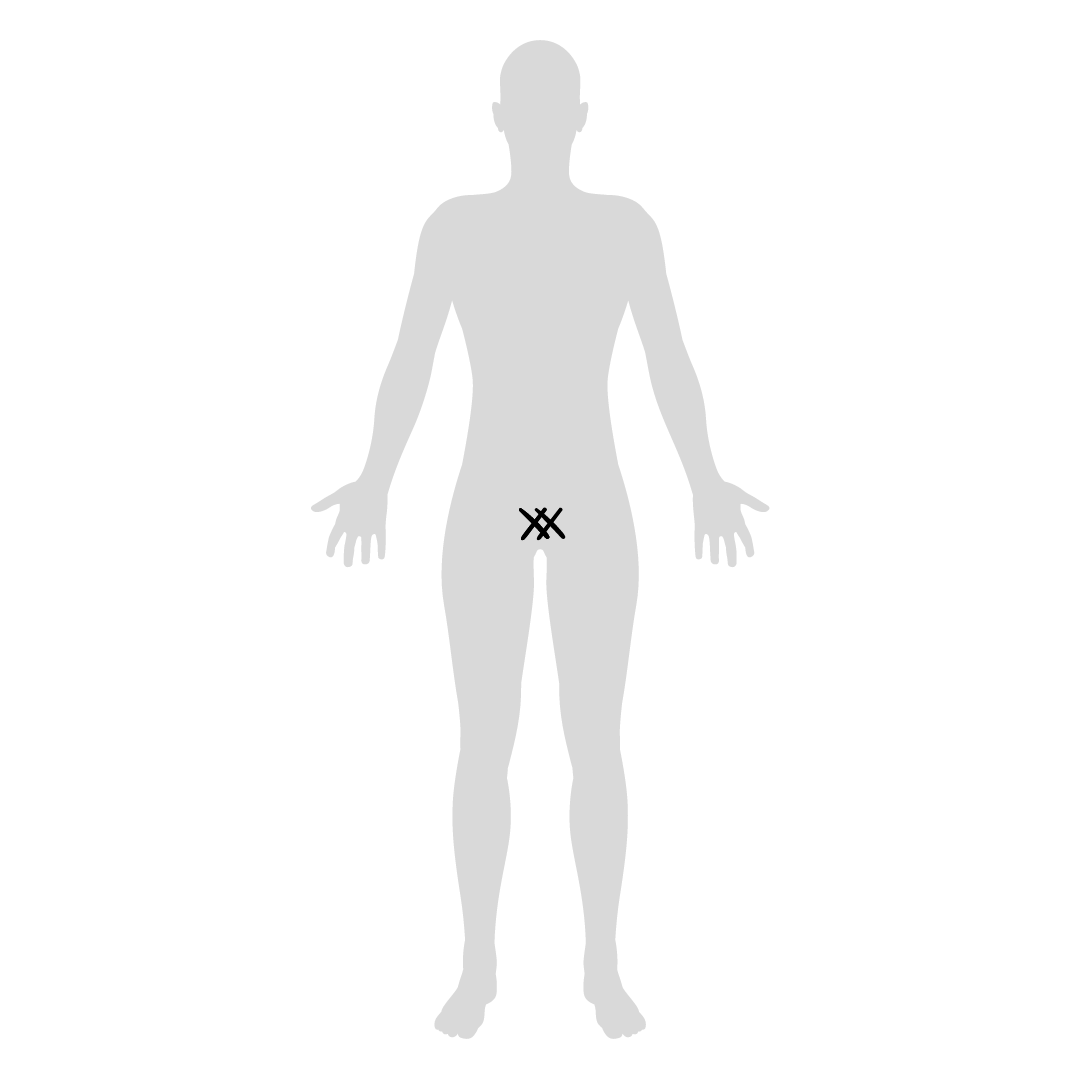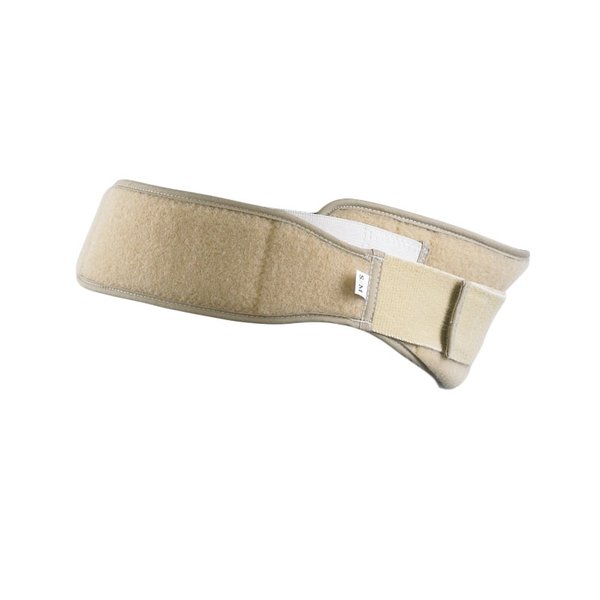What is pubic symphysis dysfunction (PSD) during pregnancy and what can we do about it?
What is pubic symphysis dysfunction (PSD)?
When a person has pain in the pubic symphysis region, primarily with movement or certain positions. It is often confused with very rare conditions, such as diastasis pubis (a separated symphysis pubis of more than 10 mm), pelvic rupture (rupture of the symphysis pubis and sacroiliac joints (SIJ) at the same time - extremely rare), or osteitis pubis (partial or complete rupture of the symphysis pubis). We’re not talking about rupture or separation, just pain in this region, which is much more common and can occur during pregnancy or the postpartum period.
I will admit that when I first started treating pregnant people, I didn’t get a lot of advice about how to help people with pain in this area. I was told to “check alignment” and offer a support belt, and that was about it. Needless to say, that information was lacking and not very helpful. Now that I’ve been treating pregnant and postpartum people for many years, here are some ideas I have gained from other pelvic health providers and my patients (through some trial and error).
How common is PSD or pubic bone pain during pregnancy?
The incidence of pelvic pain in general during pregnancy has been reported as between 48–71%. Pubic symphysis dysfunction specifically has been reported in 31.7% of pregnant women. If pain is in other areas besides the pubic symphysis, it may be considered pregnancy-related pelvic girdle pain (PGP) or sacroiliac joint (SIJ) dysfunction. This blog is primarily covering pain in the pubic symphysis region.
Symptoms of PSD:
Describing “shooting” pain in the symphysis pubis
Pain radiating into the lower abdomen, back, groin, perineum, thigh, and/or leg
Movement exacerbates pain: walking, rolling in bed or getting out of bed, getting in/out of a car, standing on one leg, one foot slipping out to the side, going up/down stairs
Improvement in pain with rest or not moving
Clicking, snapping or grinding may or may not be heard or felt in the symphysis pubis region
Dyspareunia (painful intercourse) - may be worse with certain positions
Who gets PSD during pregnancy?
Theoretical causes:
Biomechanical strains of the pelvic ligaments
Hyperlordosis due to pregnancy
Metabolic and hormonal (relaxin/progesterone) changes leading to ligamentous laxity
Inflammation, narrowing, or degeneration of the joint
Decreased muscle strength and/or endurance
Muscle imbalance, possible with hamstrings, hip flexors, and/or adductors
Increased fetal and pregnancy-related weight gain
Are there any objective measures we can look for and assess?
Pain location (where they point to or draw on a body map)
Tenderness over the pubic symphysis
A palpable gap in the pubic symphysis
Suprapubic edema/swelling
Painful MAT-test (in standing, the patient abducts and adducts the hip while dragging the foot, simulating the movement of pulling a mat)
Positive Trendelenberg’s sign on one or both sides
Waddling gait with short steps
MAT-test for PSD
What’s the prognosis for PSD ?
While I didn’t find any specific statistics of improvement DURING pregnancy, in one study, postpartum most women’s pain regresses over the first 1–6 months, 25% had pain 4 months postpartum, and only a small number after 12 months. I have had many patients improve 100% after birth, however, some who are getting back into a more higher-level workout routine or sport, like running or jumping, have often required more hands-on PT sessions postpartum to fully eliminate pain.
Treatment Options for PSD: External Support
Sacroiliac (SIJ) belt for pregnancy: can provide compression to the pelvis and distribute the pressure of weight bearing over a greater surface area. Kind of like what a patellar strap can do for patellofemoral syndrome - distribute the pressure more broadly to reduce pinpoint pain.
Serola Sacroiliac Belt or OPTP Maternity Sci-Loc Sacroiliac Support Belt - non-stretchy belt intended to give support and compression to the pelvis during movement and walking
Pregnancy support band (elastic): to give abdominal support and help “unweigh” the abdomen to reduce strain on the pubic symphysis
Cons: The belt may not help with pain or be uncomfortable to wear
Kinesiotape:
Reduce short term pain
support muscular activity of the taped muscle fibers
Improve blood flow and lymphatic flow
Provide some good sensory feedback and a reminder of body positioning
There are many methods of applying Kinesiotape to the pelvis or belly during pregnancy. This picture shows one idea of what you can try. Keep in mind not to pull the tape taut throughout or it won’t stay put. I tend to give a stretch in the middle but place the two ends down with slack.
Cons:
-Sensitive skin in this area may not tolerate the adhesive
-May be difficult to self- apply
-Can be a challenge if the person has pubic hair present (due to the placement over the mons pubis).
Treatment Options for PSD: Patient Education
-Caution with dynamic exercises and exercises with uneven weight such as running, jumping, lunges, single-leg squats, etc.
-Caution prolonged inner thigh stretching and certain yoga poses that pull on the pubic symphysis
-Avoid sitting or standing with weight shifted to one side or pelvis shifted (sitting with one leg tucked under your bum)
-Consider sleeping with a pillow between knees
-Keep knees together rolling in bed, getting up and out of bed, getting in/out of a car, etc.
-Consider penetrative penile sexual activity in sidelying, with the partner entering in from behind, to reduce excessive pressure in an “open-legs” position
Treatment Options for PSD: Hands-On Options
PT Manual Therapy: Deep tissue mobilization, myofascial release, trigger point release
-External supra-pubic region, adductors longus, brevis, magnus, pectineus, coccygeus, glutes, deep hip rotators, iliacus, quadratus lumborum
-Internal pelvic floor muscles - anterior attachments of puborectalis, pubococcygeus, obturator internus
PT Muscle Energy Techniques (MET):
-Shotgun
-Ilium anterior or posterior rotation techniques
-Sidelying pelvic mobilizations for anterior elevation/posterior depression
PT Dry Needling:
-Adductors longus, brevis, and magnus
-Pectineus
Patient self-release with ball or foam roll:
-Tensor fascia latta (TFL), gluteus medius, piriformis, outer glute/hip region
Patient self-release with cupping with mobilization: use a silicone cup with oil or lotion or in the shower with soap, get some suction and massage up and down the inner thigh, along the direction of the muscle fibers, toward the pubic bone and back
-Adductors (inner thighs)
-Pubic region
-Outer hips and glutes
Treatment Options for PSD: Isometrics and Exercises
Pelvic shift and isometric exercises for patients to try to relieve pain:
-Shotgun
-Opposing isometric ilium rotation in supine or with feet against a wall for 6-8 sec. hold, 3 times, get up and move around, check for improvement, if none, try the same thing on the opposite side
-Single-leg resisted seated hamstring curl or seated ball squeeze with hip shift - same as above - try one side first, get up and move around and check for improvement before trying the other side.
Other exercises to try:
-Squats with ball between knees or band loop above knees
-Hip thrusts with ball between knees or band loop above knees
-Bridges with ball between knees or band loop above knees (feet flat on the floor or up on a wall with knees/hips at 90/90)
Opposing isometric ilium rotation
Hip thrusts with ball
The take home:
Pubic symphysis dysfunction (PSD) is a painful condition that is common during pregnancy. Although there are good outcomes postpartum, managing symptoms and helping people maintain an active lifestyle throughout their pregnancy is crucial.
External support, education, hands-on treatments with skilled pelvic health PT/OTs, and exercise are all components that can help.
Manual therapy, especially internal anterior pelvic floor work, and dry needling, especially in the adductor area, have been game changers for me when working with these patients.
Isometrics and exercises are worth trying but every person’s body is different. Things that work for some people won’t for others - you may have to try different options to find the best ones!
This condition can be very debilitating to your patients but it is not permanent. Give your patients encouragement and support - the more you can help them stay active throughout their pregnancy, the better off they will feel!
References:
Borg-Stein J, Dugan SA. Musculoskeletal disorders of pregnancy, delivery and postpartum. Phys Med Rehabil Clin N Am. 2007;18(3):459–476.
Depledge J, McNair PJ, Keal-Smith C, Williams M. Management of symphysis pubis dysfunction during pregnancy using exercise and pelvic support belts. Physical Therapy. 2005;85(12):1290–1300.
Howell, E. Pregnancy-related symphysis pubis dysfunction management and postpartum rehabilitation: two case reports. J Can Chiropr Assoc. 2012;56(2):102-11.
Leadbetter RE, Mawer D, Lindow SW. Symphysis pubis dysfunction: a review of the literature. J Maternal-Fetal Neonatal Medicine. 2004;16:349–354.
Leadbetter RE, Mawer D, Lindow SW. The development of a scoring system for symphysis pubis dysfunction. J Obstetrics Gynecology. 2006;26(1):20–23.
Olsen MF, Gutke A, Elden H, Nordenman C, Fabricius L, Gravesen M, Lind A, Kjellby-Wendt G. Self-administered tests as a screening procedure for pregnancy-related pelvic girdle pain. Eur Spine J. 2009;18(8):1121–1129.
Disclaimer: These self-care suggestions are for general use only and are not intended to be used as medical advice, diagnosis, or treatment. Refer to your medical provider for all questions and concerns regarding your individual care.
Did you enjoy this? Join my newsletter and stay up to date with the latest and greatest!














